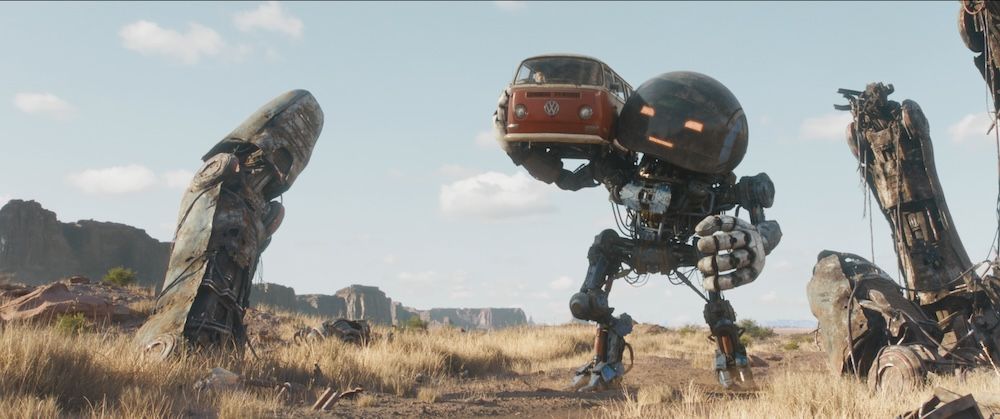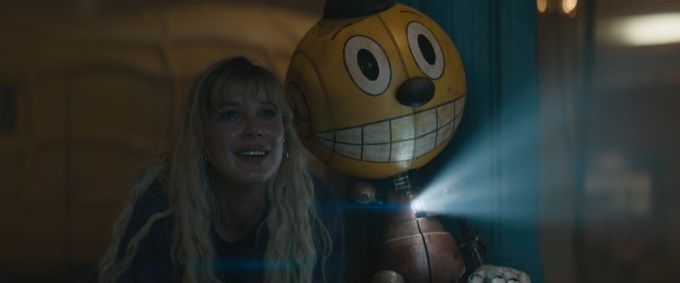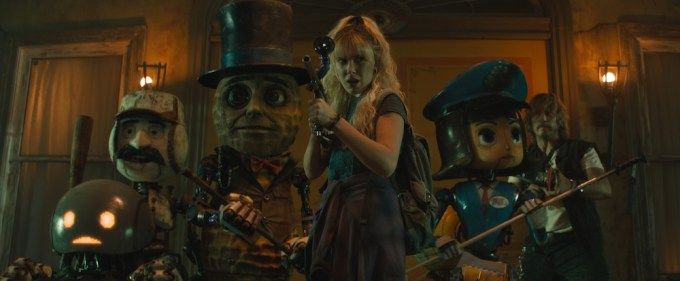
Netflix's 'The Electric State': Robots That Break the Mold
Get ready for a robot revolution unlike anything you've seen before! Netflix's upcoming movie, "The Electric State," directed by the Russo brothers (of Avengers fame!), plunges us into an alternate 1990s where sentient robots aren't just a novelty – they're a part of the world, a world grappling with the aftermath of a robot rebellion.
With a reported budget of $320 million, this isn't your average sci-fi flick. "The Electric State," based on Simon Stålenhag's illustrated novel, throws us into a reality where robots, once masters, are now exiled. Millie Bobby Brown and Chris Pratt find themselves venturing into this robot-inhabited zone, and that's where things get really interesting.
The Anti-Robot Robot Design
What makes these robots so unique? Visual effects supervisor Matthew E. Butler explains that they are deliberately designed to be the opposite of today's sleek, efficient robot designs. Forget the balanced, center-of-mass approach of Boston Dynamics. Think "giant head on a tiny neck," a design Butler playfully calls "the worst design for a robot."
But there's a method to the madness. These robots, like Cosmo, are intentionally "unthreatening," designed to appear "cutesy and goofy and fun." They're a blend of pop culture influences, both real and imagined, creating a visual style that's both familiar and strikingly different.
Making the Impractical Believable
The challenge for Butler and his team was to make this inherently impractical design feel real. They achieved this by honoring Cosmo's original silhouette while adding layers of detail that ground him in reality. Up close, you'll see push rods, motors, and circuitry, convincing you that "the thing can really work." This believability is key to accepting the robots' design and the world they inhabit.
A Robot Army of Individuals
And there are a lot of robots. Butler's team created "hundreds and hundreds of unique robots." Not because every robot is unique in this world, but because the film focuses on individual characters. Each robot is a personality, brought to life through painstaking work.
No Easy Shortcuts
"We scratched our heads so many times — like, ‘How the hell do we do this?’" Butler admits. With each robot needing to move believably, the team had to design, paint, rig, and animate each one individually.
Motion Capture Magic
Bringing these robots to life involved a blend of traditional optical motion capture and newer accelerometer-based suits. This allowed a team of performers to interact with the live-action actors on set, providing the foundation for the robots' animation.
However, it wasn't as simple as mapping an actor's movements onto a robot. The team had to consider the limitations of the robot's design and the directors' vision. Voice actors added another layer, influencing the robot's cadence and personality.
A Collaborative Creation
Ultimately, the robots of "The Electric State" are a testament to the power of collaboration. The work of motion capture performers, animators, designers, and voice actors all come together to create these unique and believable characters. Butler sums it up perfectly: "And that’s why we really just rolled up our sleeves and got on with it.” Prepare to be amazed when "The Electric State" hits Netflix!
2 Images of Electric State Robots:




1 Video of Electric State Robots:
Source: TechCrunch